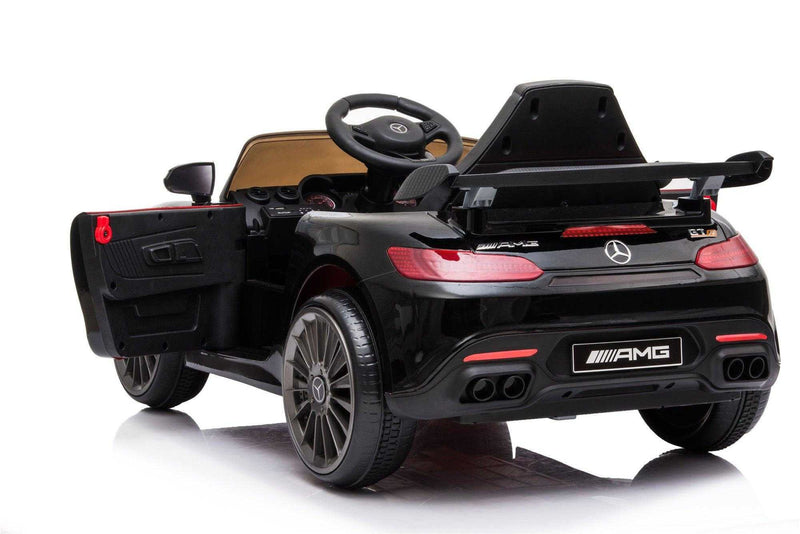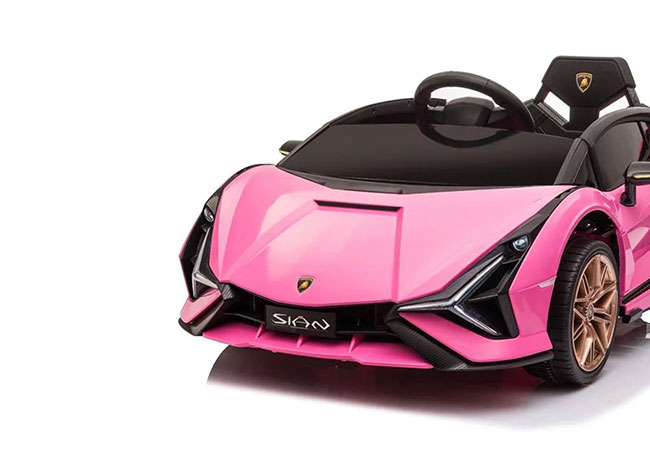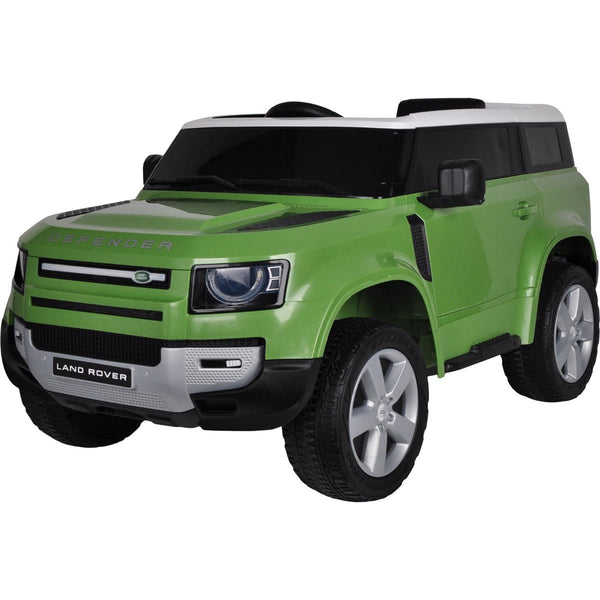Good Reasons For Choosing Kids Cars
Good Reasons For Choosing Kids Cars
Blog Article
What Information Do I Need To Know About Battery Life & Charging Time For An Electric Ride-On Kid's Car?
Understanding the charging times and battery life of an electric ride on kids' car will help you to ensure uninterrupted playtime. Here's what you need to be aware of: Battery Type
Most electric cars for children are rechargeable, and typically make use of lithium-ion or lead-acid battery. Lithium ion batteries offer greater battery lifespan than lead-acid and charge faster.
Battery Capacity
The capacity of the battery can be measured in either amps-hours or watts. The capacity of the battery is crucial because it determines how long the ride-on vehicle can run prior to recharging.
Run Time -
The duration of the runtime for an electric vehicle is the length of time that a vehicle is able to run continuously on one battery charge. This is contingent on a range of variables, including the battery, the motor as well as the terrain and the weight of the rider.
For electric cars The typical runtime for electric ride on cars is between 30 minutes and 2 hours with one battery charge. Nevertheless, high-capacity lithium batteries can offer longer running times.
Charging Time
Charging time is the amount of time required for batteries to be fully charged after it is depleted. Charge times can vary based upon battery capacity or the specifications of the charger.
In general the charging time for electric vehicles is between 8 and 12 hours. However, some models may provide faster charging times, especially using lithium-ion batteries.
Follow the charging guidelines provided by the manufacturer to ensure battery safety and longevity. Battery performance and durability can be affected by overcharging or undercharging.
Charging Method
The majority of electric ride-on vehicles come with a charging cord that plugs directly into a standard outlet. Some models come with quick-charging capabilities or smart chargers that analyzes the condition of the battery, and then adjusts charging rates accordingly.
To ensure that the battery is not damaged or harm to electrical systems, check the charger that comes with the car is compatible with the charging port.
Batteries for Additional Use
Certain electric ride-on vehicles might allow you to buy extra batteries or spares to extend your playtime. A supply of batteries lets you switch out batteries that are depleted for fully charged ones, which reduces the amount of time between sessions.
Knowing the battery's life and charging time of an electric ride-on children car is a guarantee your child will enjoy uninterrupted playtime and adventures as they explore the world around them. The life and performance of the battery can be improved by regularly charging the batteries, and using proper charging practices. View the best JCB ride on toys for website info including toy car toy car, kiddies cars, toy car toy car, cars pedal car, two seater electric cars, two seater childrens electric cars, digger ride, ride ons, toy cars toy car, race car toy car and more. . 
What Kind Of Assembly And Upkeep Requirements Exist For Kids' Rides On Automobiles?
For optimal performance, safety and durability kids' ride-on vehicles require some form of assembly. Here are a few common assembly and maintenance needs for kids' ride-on vehicles:
The majority of cars that ride on are assembled in a way and require some assembly. Attaching the wheel, steering wheel seats, and other components to the ride-on car in accordance with the specifications of the manufacturer is the most common method.
Follow the assembly directions carefully and ensure that every component is securely secured. In accordance with the directions, complete the assembly using the provided hardware and tools.
Cleaning
Regular cleaning is necessary to keep the ride-on car looking its best and functioning effectively. Use a soft, damp cloth with mild soap and water, to wipe the exterior surfaces.
Pay particular attention to areas susceptible to buildup such as tires, undercarriage, and wheels. Use a brush and toothbrush to clean those difficult-to-access areas.
Avoid using harsh chemicals and abrasive detergents. They could damage electronic components or paint of the ride-on car.
Battery Care
If the ride-on vehicle is powered with a rechargeable battery the proper care of batteries is vital to maintain performance and prolong battery life. Follow these guidelines to take care of your battery -
Charge the battery before each use, and completely after each use. This ensures that you have the best performance.
Avoid overcharging and leaving the battery connected to the charger for extended periods. This can damage the batteries and shorten their longevity.
When not in operation Keep the battery and ride-on cars in a location which is cool and dry and far from extreme temperatures and direct sunlight.
Regularly check the battery terminals for corrosion or damage, and clean them with a terminal cleaner or wire brush if necessary.
Replace the battery if it no longer holds a charge or shows signs of damage or deterioration.
Tire Maintenance -
Regularly check the tires for indications of wear, damage or loss of air. When needed, make use of a bicycle air pump or an air compressor to fill the tires to the pressure recommended by.
Check the tread pattern and see if there is any foreign object or debris that could cause flats and punctures. Remove any obstructions and repair or replace damaged tires if necessary.
Lubricate your wheel bearings and axles to ensure smooth movement.
Occasional Repairs and Replacements
Even with regular maintenance, ride-on cars could require repairs on occasion or part replacements due to wear and wear or damage caused by accident.
Check for indicators of malfunctions, including unusual noises, a decrease in power, or an unsteady performance. Check the manufacturer's guidelines or contact customer service to get help on troubleshooting or repair options.
Replace worn-out and damaged components to protect yourself from further harm, and ensure that the ride-on vehicles are secure and reliable.
Follow these assembly guidelines as well as maintenance guidelines will ensure your child is entertained for hours while playing safely. Follow the top rated read more for remote control childrens cars for more recommendations including car toy toy, toy cars, electric car ride, toy a car, race car toy, ride of car, toy cars, kidscars, riding digger, race car toy and more. . 
What Should I Think About Before Buying An Electric Kid's Car? What Are The Advantages?
Be aware of these aspects before buying an electric kid's car to make sure you get the most suitable model for your child. Below are some important considerations along with information about sizes, prices and pros and cons.
Consider your child's age and weight when choosing an electric car. Smaller and younger children may prefer compact and lightweight models, whereas older and larger children may require larger vehicles with larger spaces to seat them comfortably.
Car dimensions and weight
Electronic cars for kids are available in a variety of sizes, from small micro-sized models, to larger-scale replicas of real cars. The size and weight of your child's vehicle must be determined by their age, size, and the strength. Consider the amount of space available for storage and play.
Price Range -
Electric cars for kids can be found in a diverse price range based on factors like dimensions, features and brands. Smaller models tend to be more affordable, with prices that range from $50 to $200, while larger-scale models can cost from $200-$800 or more for premium, licensed replicas.
Pros and cons
Pros -
Electric kids' car offer hours of entertainment and imagination for your children. It allows them to experience the thrill of driving their very own vehicle.
Motor Skill Development - Operating an electric vehicle helps children develop coordination, spatial awareness, and fine motor skills.
Outdoor Play – Electric cars encourage outdoor activities and play. This encourages exercise and exploration.
Realistic Features: Many electronic kids' cars feature realistic features like working headlights, horn sounds, as well as MP3 player compatibility, enhancing the play experience.
Cons
Cost - The best electric children cars aren't cheap particularly licensed replicas of well-known car brands.
Battery Life - Electric cars depend on rechargeable batteries for power. These batteries might have a limited time of operation and require frequent recharge.
Safety Concerns - If they are not properly operated and with an adult's supervision, electric vehicles can present safety risks such as collisions, falls and traps.
Assembly and Maintenance - Some electric vehicles require assembly on arrival and regular maintenance which includes cleaning, battery care and occasional repairs or part replacements.
Accessories and features -
Check out the options and features that you can get for your electric kid's car. Examples include working headlights or the sound of a horn. Select a car that is compatible with your child's preferences and interests.
The best electric children's car for you child will ultimately depend on the factors of their age and size, as well as their interests and budget. Be sure to compare the different models, go over them and consider the advantages before deciding. Follow the top Audi kids car kidscars.co.uk info for website info including digger ride, toy car for car, cars pedal car, car toy car toy, riding digger, car on ride, electric ride on cars, race car toy car, toy in car, two seater electric cars and more. .